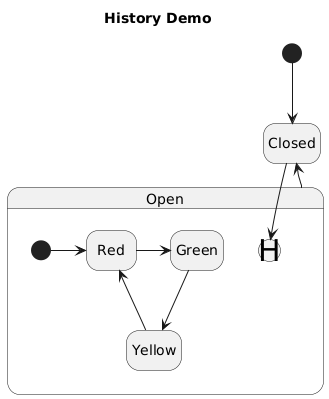This is not be a perfect solution...
@startuml
hide empty description
skinparam shadowing false
skinparam state<<history>> {
backgroundColor transparent
borderColor transparent
fontSize 30
}
title History Demo
[*] --> Closed
Open --> Closed
state Open {
[*] -r-> Red
Red -r-> Green
Green --> Yellow
Yellow --> Red
state "Ⓗ" as H<<history>>
Closed --> H
}
@enduml
As you can see below, a residual problem is that the arrow to the history state stops short of reaching to it!
